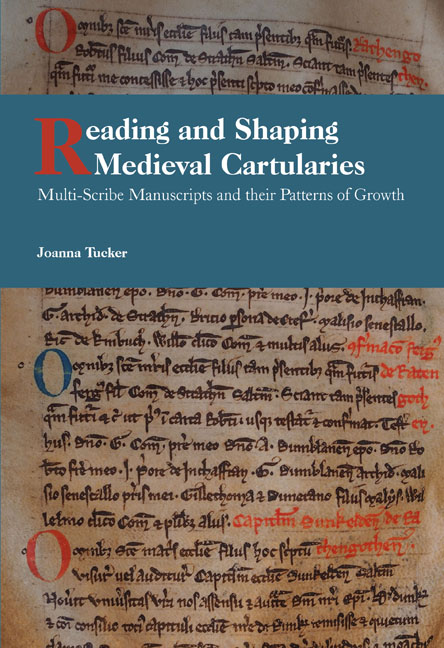Book contents
- Frontmatter
- Contents
- List of Plates
- List of Figures
- List of Tables
- Acknowledgements
- List of Abbreviations
- Conventions
- Introduction
- 1 Cartulary Studies
- 2 Analysing a Multi-Scribe Cartulary
- 3 The Creation and Growth of the Glasgow RV
- 4 The Creation and Growth of Lindores Caprington
- 5 Understanding the Patterns of Growth in Multi-Scribe Cartularies
- 6 Conclusion
- Appendix: Contents of the two Cartularies by ‘Series’
- Bibliography
- Index
- Studies in Celtic History
3 - The Creation and Growth of the Glasgow RV
Published online by Cambridge University Press: 13 April 2021
- Frontmatter
- Contents
- List of Plates
- List of Figures
- List of Tables
- Acknowledgements
- List of Abbreviations
- Conventions
- Introduction
- 1 Cartulary Studies
- 2 Analysing a Multi-Scribe Cartulary
- 3 The Creation and Growth of the Glasgow RV
- 4 The Creation and Growth of Lindores Caprington
- 5 Understanding the Patterns of Growth in Multi-Scribe Cartularies
- 6 Conclusion
- Appendix: Contents of the two Cartularies by ‘Series’
- Bibliography
- Index
- Studies in Celtic History
Summary
The methodology laid out in Chapter 2 has now set the scene for a detailed analysis of Glasgow Cathedral's earliest cartulary, the Glasgow RV. Following the steps of the methodology will allow us to piece together the development of this manuscript through the different stages of its lifetime. The discussion in this chapter will be structured around the cartulary's thirteen ‘series’. The series will be presented in the order that they appear in the manuscript today, not their chronological order. The overall chronological development of the manuscript will be summarised at the end of the chapter. The contents of the numbered scribes’ additions, as well as their relative dates, are presented in the Appendix. There, the contents are also structured by series. It will therefore be useful to refer to the Appendix alongside this chapter's discussion. The Appendix is the first time that the Glasgow RV's contents have been published in the order that they appear within the manuscript itself since, it will be recalled, the nineteenth-century publication of Glasgow Cathedral's ‘muniments’ arranged the material by date, using the Glasgow RV as one of many sources for the lost archive. The chapter will conclude with a broader look at the institutional setting for the Glasgow RV as well as its potential function in light of the analysis.
This bifolio is situated after the front flyleaf. Three scribes have added one text each, which do not seem to relate to one another: a charter of the bishop of Glasgow (Scribe 1), two statements regarding the laws of succession to land (Scribe 2), and a charter of King Edward III that formed part of the Treaty of Edinburgh–Northampton (Scribe 3). Scribe 1's text (f. 1r–v) would have been added first. As its real time date is 27 March 1417, Scribe 2 and Scribe 3's contributions must have been copied onto this bifolio after that date, although it is not clear who added their text first: Scribe 2 (to the lower half of f. 1v) or Scribe 3 (to f. 2r). Comparable handwriting for these three scribes can be found in Scottish documents from across the first half of the fifteenth century. The scribes therefore wrote their texts onto this bifolio certainly after 27 March 1417, and probably before the mid-fifteenth century.
- Type
- Chapter
- Information
- Reading and Shaping Medieval CartulariesMultiple Scribes and Patterns of Growth, pp. 91 - 133Publisher: Boydell & BrewerPrint publication year: 2021



